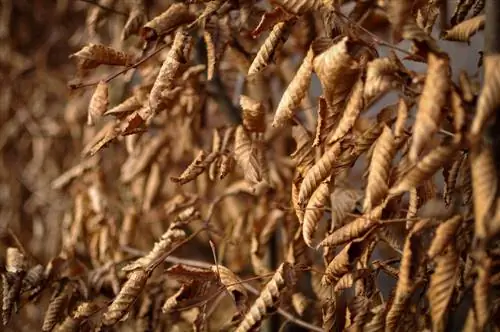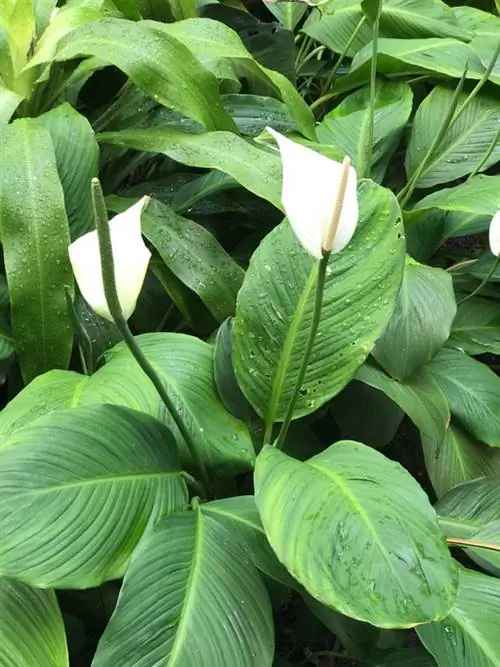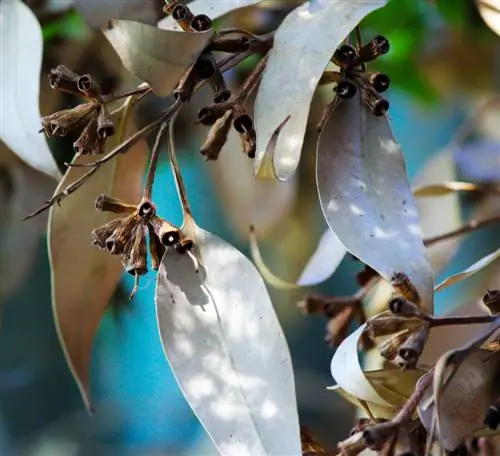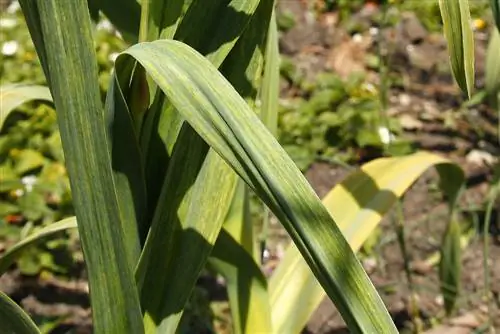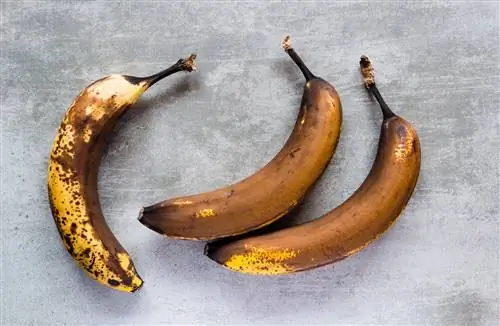- Author admin [email protected].
- Public 2023-12-16 16:46.
- Last modified 2025-01-23 11:22.
Gold privet lives up to its name and produces golden-green foliage. Sometimes, however, he gets carried away with brown-colored specimens. It's one thing that we don't find it attractive. But are they also a serious symptom of a deficiency or even illness?
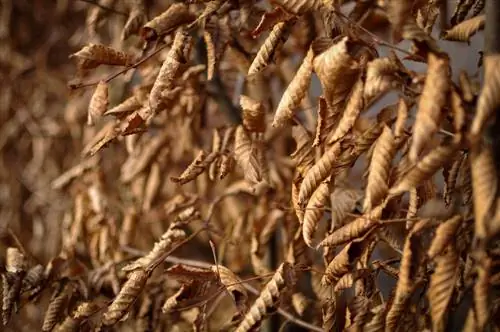
Why does my golden privet have brown leaves?
Brown leaves on golden privet can be caused by too much sun, drought or diseases such as leaf spot. In most cases they are nothing to worry about and will resolve themselves over time through leaf fall. If problems persist, transplanting to a shadier location can help.
Brown leaves in spring
Privet is considered wintergreen, but with restrictions. In harsh winters it can lose part or all of its leaves. Fortunately, the bare branches sprout again the following year. If this new growth is brown, there is usually one reason: too much sun.
The delicate new growth is not shaded by old leaves and must be exposed to the full power of the sun. It can take a few days for it to get used to the light intensity and grow golden green again. The brown leaves are merely an optical problem, which resolves itself over time as the leaves fall.
Brown leaves at other times
Extreme drought combined with negligent water supply can also lead to brown leaves. Even very long wet periods can cause leaf discoloration.
Tip
If a small golden privet is too sunny in its location, replanting should be considered. This prevents brown leaves.
Brown spots on leaves
If the leaves are not completely brown, but are covered with brown and black dots, it could also be a disease. Leaf spot disease has probably broken out. This disease tends to occur in wet summers.
- fight with preparations containing copper (€6.00 on Amazon)
- the speed of propagation is reduced
- no more nitrogen-heavy fertilizers
- the plant tissue must not become spongy
Verticillium
If the leaves not only change color, but also curl up and dry out, the wilting fungus could be responsible. The fungus that lives in the soil cannot be controlled chemically. However, the soil in the root area can be replaced to alleviate the infestation pressure.

